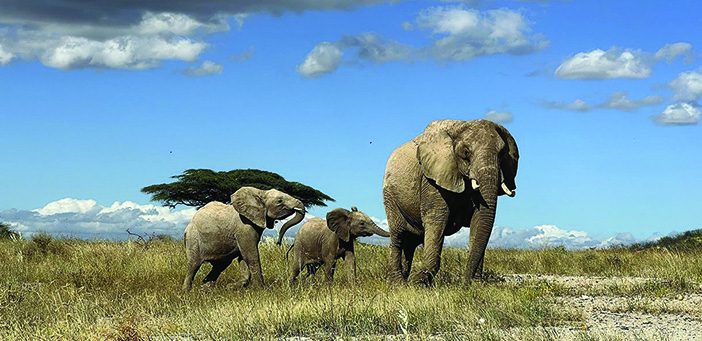Study showing pachyderms’ dietary habits could affect wildlife protection and conservation strategies.
Elephants eat plants. That’s common knowledge to biologists and animal-loving schoolchildren alike. Yet figuring out exactly what kind of plants the iconic herbivores eat is more complicated.
A new study from a global team that included Brown conservation biologists used innovative methods to efficiently and precisely analyze the dietary habits of two groups of elephants in Kenya, down to the specific types of plants eaten by which animals in the group. Their findings on the habits of individual elephants help answer important questions about the foraging behaviors of groups, and aid biologists in understanding the conservation approaches that best keep elephants not only sated but satisfied.
The study was published in the journal Royal Society Open Science.
“It’s really important for conservationists to keep in mind that when animals don’t get enough of the foods that they need, they may survive—but they may not prosper,” says study author Tyler Kartzinel, PhD, the Peggy and Henry D. Sharpe Assistant Professor of Environmental Studies and an assistant professor of environmental studies and of ecology, evolution, and organismal biology at Brown. “By better understanding what each individual eats, we can better manage iconic species like elephants, rhinos, and bison to ensure their populations can grow in sustainable ways.”
One of the main tools that the scientists used to conduct their study is called DNA metabarcoding, a cutting-edge genetic technique that allows researchers to identify the composition of biological samples by matching the extracted DNA fragments representing an elephant’s food to a library of plant DNA barcodes.
Brown has been developing applications for this technology, says Kartzinel, and bringing together researchers from molecular biology and the computational side to solve problems faced by conservationists in the field.
This is the first use of DNA metabarcoding to answer a long-term question about social foraging ecology, which is how members of a social group—such as a family—decide what foods to eat, Kartzinel says.
“When I talk to non-ecologists, they are stunned to learn that we have never really had a clear picture of what all of these charismatic large mammals actually eat in nature,” he says. “The reason is that these animals are difficult and dangerous to observe from up close, they move long distances, they feed at night and in thick bush, and a lot of the plants they feed on are quite small.”




